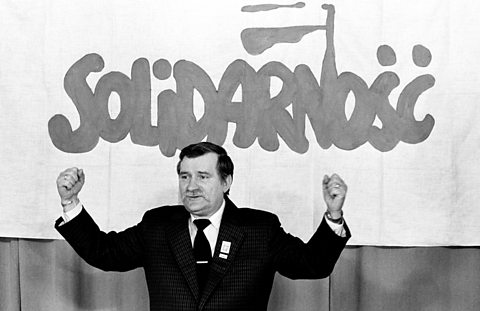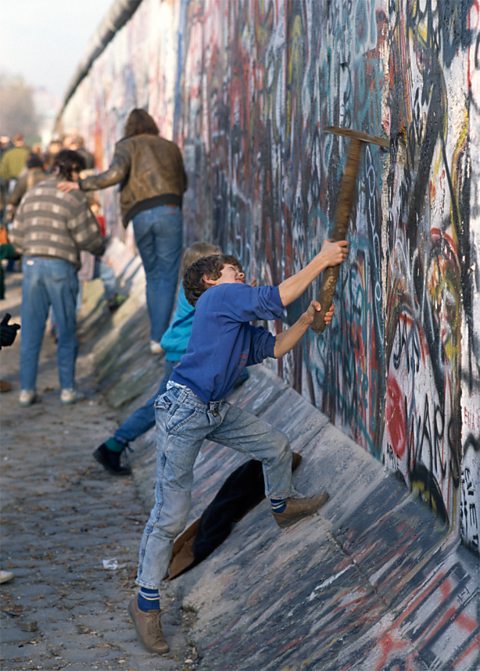Failure of communism in Eastern Europe
Opposition to Soviet policies was growing in other associated states of Eastern Europe. The majority of people were against Soviet interference and the presence of the Red Army in the Eastern Bloc.
Poland

Widespread anger and unrest hit Poland in the early 1980s. There were protests over food shortages and the price of consumer products. A trade union called Solidarity was established.
Solidarity wanted to end Soviet control of the country. Led by Lech Walesa, it encouraged continued protest against the government. Solidarity quickly gained 10 million members.
Under Soviet guidance, this revolt was suppressed by the army. By early 1982 Solidarity was banned and its leaders arrested.

The USA worked covertly with the Catholic Church to undermine communist control of Poland. Finances were provided by the West. Pope John Paul II, himself a Pole, helped to secure the release of Solidarity members. The CIA also provided Solidarity with communication technology to keep the movement alive.
The Polish economy continued to decline. In 1988 protests again spread throughout the country. Many workers illegally went on strike. this led to talks between the Solidarity leadership and the Polish government.
By early 1989, an agreement was made to hold new elections with a reduced influence for the communists guaranteed. Solidarity was legalised and was able to form a coalition without the Communist Party, establishing an anti-communist government.
Hungary

Following investigations into the 1956 revolt and a change in leadership, the Hungarian government decided to re-introduce multi-party democracy and hold elections.
In Autumn 1989, the border with Austria was opened and free movement was allowed. Many fled to the West from Hungary and East Germany.
East Germany
Thousands of people were leaving East Germany for the West through Hungary, making the Berlin Wall ineffective.
The USSR was not prepared to send in forces. As a result the East German government was forced to consider opening the border.
On the night of the 8th November, 1989 the border was opened and the Berlin Wall, which had become a symbol of Soviet oppression, was brought down.